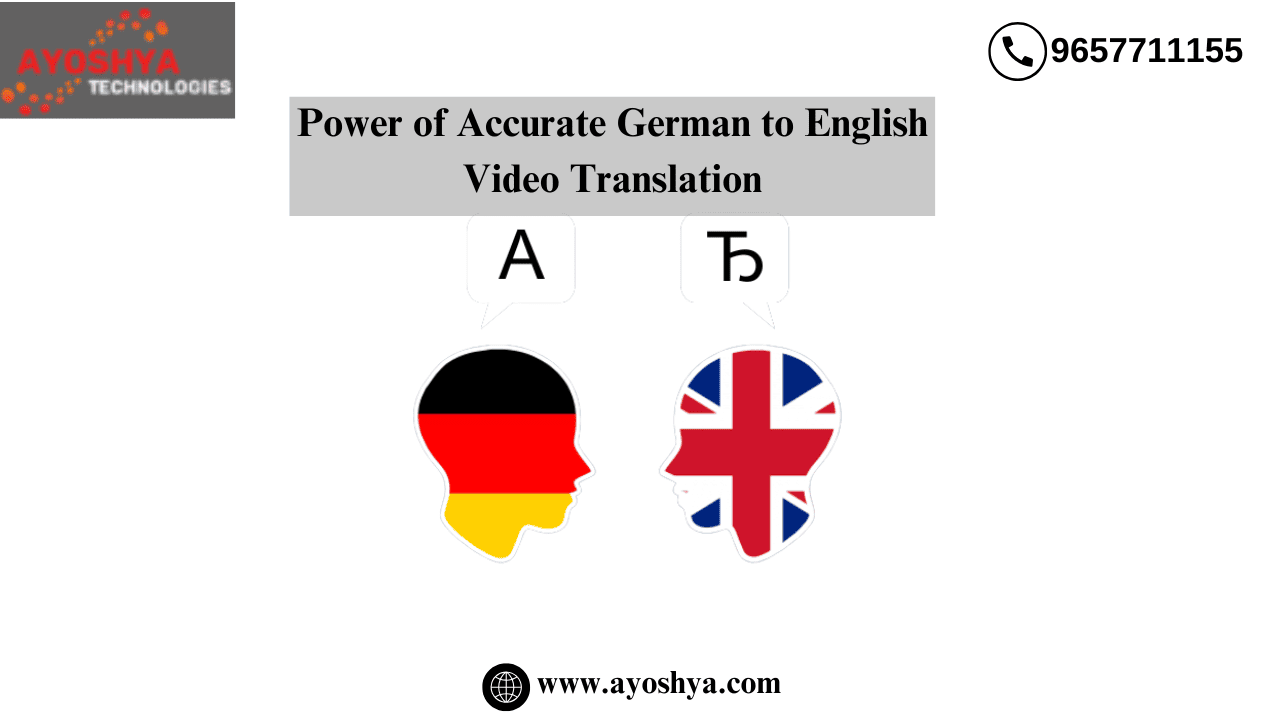The Power of Accurate German to English Video Translation in Education and Research
In today’s increasingly globalized world, communication across languages and cultures is more important than ever.
This is particularly true in education and research, where accurate and effective communication is essential for sharing knowledge and ideas.
Video translation has become a valuable tool for facilitating this communication, allowing educators and researchers to reach wider audiences and collaborate across borders.
In this article, we will explore the importance of German-to-English video translation in education and research, examining its role in promoting cross-cultural understanding, enhancing accessibility to educational resources, and improving the accuracy and impact of research findings.
The Role of German-to-English Video Translation in Education
Video translation is critical in language learning, allowing students to hear and see the language used in real-life situations.
This is particularly important for German, which is widely spoken in Europe and is the most widely spoken mother tongue in the European Union.
German to english video translation can help non-native speakers improve their listening and comprehension skills while providing valuable cultural context.
In addition to language learning, video translation can enhance understanding of academic content in various subjects.
For example, accurate video translation can make a German lecture on philosophy or history accessible to English-speaking students.
This broadens the scope of educational content available to students and offers a more comprehensive understanding of the subject matter.
Furthermore, video translation can improve accessibility to educational resources for non-native speakers.
As more universities and academic institutions move toward online learning, video translation can make resources available to students needing access to traditional classroom settings.
This has become especially important during the COVID-19 pandemic, which has forced many universities to transition to remote learning.
Case studies and examples of successful video translation in education abound. For instance, the Goethe-Institute , a German cultural institute, has launched a digital platform called “Deutsch für Dich” (“German for You”) that provides free German language courses with subtitles in multiple languages, including English.
Similarly, the German Academic Exchange Service (DAAD) provides a vast library of video resources for students and educators, including lecture recordings and virtual campus tours with English subtitles.
The Role of German-to-English Video Translation in Research
In addition to its role in education, video translation is essential for promoting cross-cultural understanding in research.
Effective communication is critical as research increasingly becomes globalized, with scholars collaborating across borders.
Video translation can help researchers bridge linguistic and cultural divides, allowing them to understand and interpret research findings from other countries more accurately.
For example, a German researcher studying the effects of climate change on local ecosystems can use video translation to share their findings with researchers in other parts of the world.
This promotes cross-cultural collaboration and helps build a more comprehensive understanding of the subject.
Similarly, video translation can improve understanding of foreign cultures and their research findings.
This is particularly important in fields such as anthropology and sociology, where cultural context is critical.
By accurately translating videos of foreign cultural practices and traditions, researchers can gain a deeper understanding of the cultures they are studying, leading to more impactful research findings.
Numerous case studies and examples of successful video translation in research exist.
For instance, the Max Planck Society, a research organization based in Germany, provides video summaries of its research findings with English subtitles.
This allows researchers worldwide to access their findings and collaborate more effectively.
Challenges of German to English Video Translation in Education and Research
While video translation offers many benefits, significant challenges must also be overcome.
Linguistic and cultural differences can make accurate translation difficult, particularly for idiomatic expressions and slang.
Technical challenges, such as poor audio quality or difficult-to-read subtitles, can also impact the effectiveness of video translation.
Accuracy and cultural sensitivity are also crucial in video translation. A mistranslation or misinterpretation can lead to misunderstandings and even offense, particularly in cross-cultural contexts.
Translators must be fluent in both languages and have a deep understanding of the cultural context in which the video is being produced.
To overcome these challenges, it is essential to employ skilled translators experienced in video translation. Quality control measures like peer review and user feedback can also help ensure accuracy and cultural sensitivity.
The Future of German to English Video Translation in Education and Research
Advancements in technology offer exciting opportunities for the future of video translation in education and research.
Machine translation tools, such as Google Translate, are becoming increasingly sophisticated, with the ability to translate entire videos in real-time.
While these tools are not yet perfect, they have the potential to significantly improve the accessibility of educational and research content.
AI-powered translation tools also offer the potential for improved accuracy and efficiency in video translation.
By using machine learning algorithms to enhance translations based on user feedback, these tools can learn and adapt to the nuances of language and culture. This could lead to more accurate and culturally sensitive translations and more effective communication across languages and cultures.
Opportunities for collaboration among educators, researchers, and translators also offer the potential for improved video translation in education and research.
By sharing resources and expertise, these groups can better understand the needs and challenges of video translation and ultimately improve the quality and effectiveness of video translations.
Conclusion
In conclusion, German-to-English video translation is critical in promoting cross-cultural understanding, enhancing accessibility to educational resources, and improving the accuracy and impact of research findings.
While there are challenges to overcome, advancements in technology and opportunities for collaboration offer exciting potential for the future of video translation in education and research.
We must invest in video translation resources and prioritize accuracy and cultural sensitivity to fully realize this valuable tool’s potential. The Power of Accurate German to English Video Translation in Education and Research
you may be interested in this blog here:-
Elevating User Experiences: Unleashing Advanced UI Elements and Custom Controls in SAPUI5



